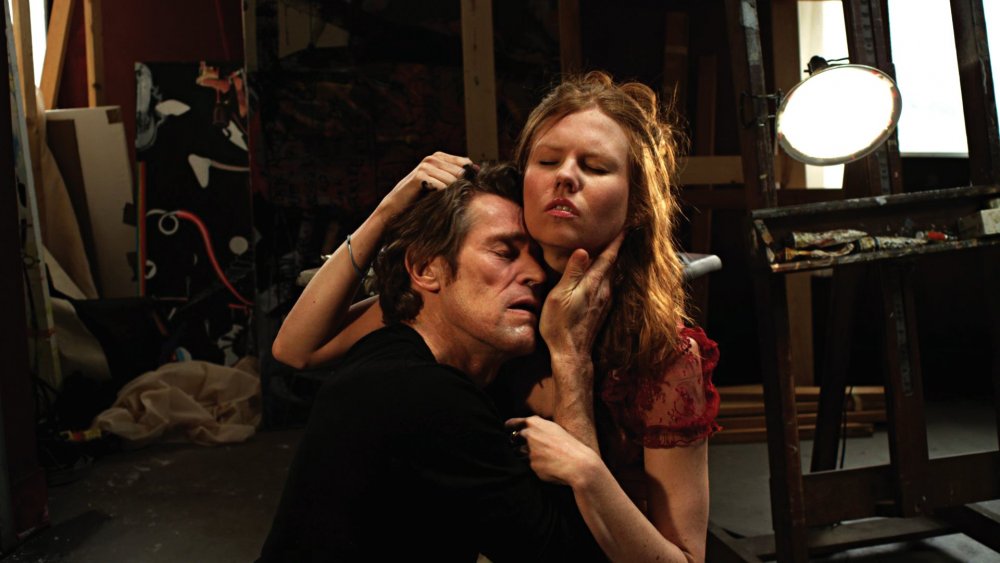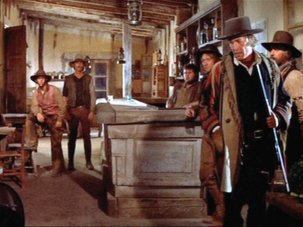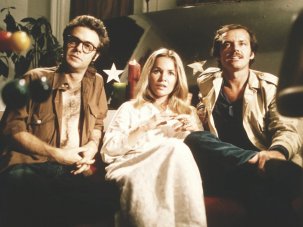from our January 2013 issue

4:44 Last Day on Earth (2011)
In his 1956 book on Rimbaud, The Time of the Assassins, Henry Miller describes contemporary poets as “locked in their glorified little egos; they hold themselves aloof from the world for fear of being shattered at the first contact. They are not even personal, when one gets right down to it, for if they were we might understand their torment and delirium, such as it is.” What Miller describes here is surely the characteristic that distinguishes so many of our most widely admired filmmakers: that desire to escape the confusions of human interaction and retreat into a private artistic realm where emotional involvement is admitted only to the extent that it can be relentlessly mocked.
The essential difference between modernism and postmodernism is that for the former narrative is a problem, whereas for the latter narrative is a joke. The idea of responding unironically to the activities of fictional individuals has now been exposed as a hoax, and it is hardly surprising that the Coen brothers, Wes Anderson, Michael Haneke and Jim Jarmusch enjoy widespread acclaim from commentators of the ‘hip’ variety. In their different ways, these directors portray ‘cool’ detachment as an ideal we should all aspire to, expressing superiority towards not only their characters but also those viewers who fail to comprehend that both the characters and those narrative structures that make them available to us are nothing more than empty signifiers.
Artists who refuse to follow this trend, whose work is notable for its absence of postmodern posturing, have inevitably paid the price critically and commercially. Why else have Abel Ferrara’s last eight films received only marginal exposure in the US and so far failed to find any kind of UK distribution, even on DVD? One might profitably compare Ferrara’s most recent feature 4:44 Last Day on Earth (2011) with two other films that also deal with the end of the world, Lars von Trier’s Melancholia (2011) and Gregg Araki’s Kaboom (2010).
Von Trier’s postmodernism is the kind that allows uninitiated viewers to take his mimicking of European arthouse cinema’s high seriousness at face value (audience members at Cannes who jeered Antichrist’s dedication to Tarkovsky seem to have recognised the disparity between von Trier and his models without quite getting the joke), just like those poor dumb schmucks who thought he was in earnest when claiming to be a Nazi, or were offended by Breaking the Waves’s combination of misogyny and religiosity.
Of course, anyone on von Trier’s wavelength will understand that he doesn’t mean any of this – that the Nazi comment was simply an attack on bourgeois good taste, that ideological tendencies that may appear reactionary are actually being ridiculed (though what are really subjected to ridicule are the cinematic codes by which values of any kind are communicated, rather than the values themselves). It is surely significant that the overt meanings that works in this tradition somehow manage to convey without apparently intending to are usually on the right of the political spectrum.
Artists whose work is notable for its absence of postmodern posturing have paid a price, critically and commercially
Kaboom is at least more honest in unambiguously pandering to a youth audience that considers itself too cool for school. But for all its energy, Araki’s film seems ultimately pessimistic in the way it views everything through a prism of irony. Kaboom’s narrative exists in quotation marks – we are not supposed to take the conspiracy plot any more seriously than we are to take the Earth’s destruction (an event that abruptly concludes the film, like the punchline to a joke) – and this insistence on portraying storytelling as a suspect activity goes hand in hand with a depiction of people as cartoonish figures who – though some of them represent positions to which Araki clearly subscribes – can neither be embraced nor rejected.
Neither of these films could accommodate the sequence in 4:44 in which a character who initially appears peripheral – a young Asian delivering fast food – is suddenly transformed into a complex individual bidding farewell to his family in Vietnam via Skype. 4:44 responds well to the formula I suggested in last month’s column, being explicitly concerned with performance as a theme. In this it functions as a companion piece to Ferrara’s Go Go Tales (2007): in both films Willem Dafoe plays a man whose ‘onstage’ performances are crude and solipsistic but whose ‘offstage’ roles are distinguished by complex gestures of generosity and communality.
In Go Go Tales the stage is a literal one, whereas in 4:44 it takes the form of the roof balcony on which Cisco (Dafoe) delivers a series of incoherent monologues full of self-pity and bitterness. Here, Cisco is an inert role-player, whereas in those offstage spaces where he is obliged to interact with friends, family and casual acquaintances, he becomes a subtle improviser, constantly attentive to others’ needs. Ferrara frequently juxtaposes his lead ‘actors’ with characters who have withdrawn behind performative facades (the prototype being The Driller Killer’s Tony Coca-Cola); here the role is incarnated by Cisco’s brother Noah (Paul Hipp), who uses stylish gestures and calculated anecdotes to dominate social situations. It is obvious that, in his solitary rooftop speeches, Cisco is unsuccessfully trying to imitate his brother – his failure to do this being precisely the reason he retains Ferrara’s interest.
Of course, Noah would be the hero of a film by Jarmusch or the Coens, who regard the ability to maintain a ‘cool’ surface as the ne plus ultra of social interaction. And this perhaps explains why their work has been widely distributed during a period when Ferrara’s has gone into eclipse.
The most moving images in 4:44 involve people going about their daily activities in the face of imminent annihilation, with Cisco’s partner Skye (Shanyn Leigh) continuing to work on a painting during the final minutes of life on earth. The emphasis is on art as an activity that is continuous with more ‘mundane’ activities but divorced from judgements as to its ultimate value. Whether he is dealing with life or creativity, Ferrara focuses on the doing rather than the done, the process rather than the result – an approach unlikely to prove popular at a time when our arbiters of cultural taste all too often privilege films that shut down experience rather than open it up.
-
Sight & Sound: the January 2013 issue

In this issue: Ang Lee’s 3D spectacular Life of Pi, plus the best films of 2012. In print and digital from 1 December.







